
Ipoh: The Hidden Gem of Malaysia
Discover Ipoh: A serene blend of colonial charm, natural wonders, and delicious culinary delights in the heart of Malaysia.
Nestled in the heart of Perak, Ipoh is an enchanting city known for its colonial architecture, limestone hills, and vibrant street art. Once a bustling tin mining town, Ipoh has transformed into a charming destination that offers a mix of cultural heritage and natural beauty. Begin your journey by exploring the Old Town, where you will find beautifully preserved colonial buildings that tell stories of a bygone era. The streets are lined with quaint cafes, bustling markets, and intriguing street art that adds a modern twist to the historic setting. Don't miss the chance to visit the famous Ipoh Railway Station, often dubbed the 'Taj Mahal of Ipoh,' which stands as a testament to the city's rich history. Nature lovers will be captivated by the limestone caves and hills surrounding Ipoh. The Sam Poh Tong Temple, located within a limestone cave, offers a serene escape and a glimpse into the city's spiritual side. For a more adventurous experience, head to Gua Tempurung, one of the largest limestone caves in Peninsular Malaysia, where you can explore impressive rock formations and underground streams. Ipoh is also a haven for food enthusiasts. The city is renowned for its unique culinary offerings, from the famous Ipoh white coffee to delectable street food like chicken rice and dim sum. Make sure to visit the local food markets and try the chee cheong fun and tau fu fah, which are beloved local delicacies. Whether you're a history buff, a nature enthusiast, or a food lover, Ipoh promises an unforgettable experience with its blend of cultural heritage and natural splendor.
Local tips in Ipoh
- Visit early in the morning to avoid the heat, especially when exploring outdoor attractions like the limestone caves.
- Try the local Ipoh white coffee at one of the traditional coffee shops for an authentic taste of the city.
- Wear comfortable walking shoes as the best way to explore Ipoh's Old Town is on foot.
- Don't miss the night markets for unique souvenirs and delicious street food.
- Check the opening hours of temples and caves as they may vary, and some may close early.
Neighbourhoods in Ipoh
Ipoh: The Hidden Gem of Malaysia
Nestled in the heart of Perak, Ipoh is an enchanting city known for its colonial architecture, limestone hills, and vibrant street art. Once a bustling tin mining town, Ipoh has transformed into a charming destination that offers a mix of cultural heritage and natural beauty. Begin your journey by exploring the Old Town, where you will find beautifully preserved colonial buildings that tell stories of a bygone era. The streets are lined with quaint cafes, bustling markets, and intriguing street art that adds a modern twist to the historic setting. Don't miss the chance to visit the famous Ipoh Railway Station, often dubbed the 'Taj Mahal of Ipoh,' which stands as a testament to the city's rich history. Nature lovers will be captivated by the limestone caves and hills surrounding Ipoh. The Sam Poh Tong Temple, located within a limestone cave, offers a serene escape and a glimpse into the city's spiritual side. For a more adventurous experience, head to Gua Tempurung, one of the largest limestone caves in Peninsular Malaysia, where you can explore impressive rock formations and underground streams. Ipoh is also a haven for food enthusiasts. The city is renowned for its unique culinary offerings, from the famous Ipoh white coffee to delectable street food like chicken rice and dim sum. Make sure to visit the local food markets and try the chee cheong fun and tau fu fah, which are beloved local delicacies. Whether you're a history buff, a nature enthusiast, or a food lover, Ipoh promises an unforgettable experience with its blend of cultural heritage and natural splendor.
When is the best time to go to Ipoh?
Iconic landmarks you can’t miss
Gunung Lang Recreational Park
Discover the beauty and tranquility of Gunung Lang Recreational Park, a serene escape in Ipoh, Malaysia, perfect for families and nature lovers.

Lost World of Tambun Theme Park
Experience the ultimate family adventure at Lost World of Tambun Theme Park, where thrilling rides meet stunning natural beauty in Ipoh.

Kek Look Tong
Explore Kek Look Tong, a breathtaking Buddhist temple in Ipoh surrounded by nature, offering spiritual solace and stunning views.
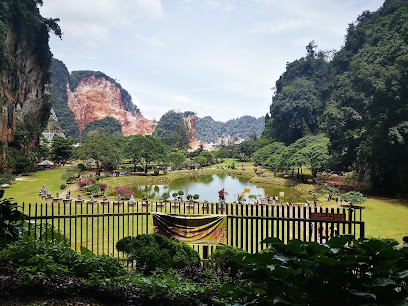
Qing Xin Ling Leisure & Cultural Village
Explore the enchanting Qing Xin Ling Leisure & Cultural Village in Ipoh, where scenic beauty meets rich cultural heritage in a tranquil setting.

Dataran Ipoh
Discover the vibrant atmosphere of Dataran Ipoh, a cultural hub in the heart of Ipoh, Malaysia, perfect for relaxation and local experiences.

Mirror Lake
Experience the serene reflections and natural beauty of Mirror Lake in Perak, a stunning tourist attraction perfect for relaxation and photography.

Perak Cave Temple
Explore the serene Perak Cave Temple, a unique Taoist sanctuary in Ipoh, Malaysia, nestled among breathtaking limestone hills and rich cultural heritage.

Dataran KTM Ipoh
Explore the historical and architectural grandeur of Dataran KTM Ipoh, a stunning landmark surrounded by beautiful gardens in the heart of Perak.

Sam Poh Tong Temple
Explore the serene beauty of Sam Poh Tong Temple, a cultural gem in Ipoh, Malaysia, blending stunning architecture with spiritual tranquility.

Padang Ipoh
Experience the serene beauty and vibrant atmosphere of Padang Ipoh, a must-visit park in the heart of Ipoh, Perak, ideal for relaxation and family outings.

Gerbang Malam Ipoh
Explore the vibrant Gerbang Malam Ipoh night market for a true taste of local culture, delicious street food, and unique shopping experiences.

TASIK CERMIN IPOH
Experience the tranquility of Tasik Cermin in Ipoh, a stunning mirror-like lake surrounded by lush greenery, perfect for nature lovers and photography enthusiasts.

Mural Art's Lane
Discover the vibrant Mural Art's Lane in Ipoh, a stunning open-air gallery celebrating art, culture, and the spirit of the city.

Kledang Hill M.E.T
Discover the breathtaking trails and serene landscapes of Kledang Hill M.E.T, an unmissable hiking destination in Ipoh, Perak, Malaysia.

Ipoh Kallumalai Arulmigu Subramaniyar Temple
Explore the stunning architecture and rich cultural heritage of Ipoh's Kallumalai Arulmigu Subramaniyar Temple, a must-visit Hindu temple.

Unmissable attractions to see
Lavender Garden (Cameron Lavender)
Discover the enchanting beauty of Cameron Lavender Garden in Pahang, a must-see destination for flower lovers and nature enthusiasts.

Taiping Lake Gardens
Discover the enchanting beauty of Taiping Lake Gardens, a serene park perfect for relaxation, nature walks, and vibrant landscapes in Perak, Malaysia.

Kellie's Castle
Discover the enchanting Kellie's Castle in Perak, a unique blend of history and architectural beauty, surrounded by lush gardens and rich tales.
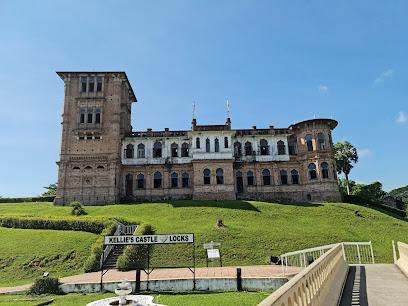
Gunung Lang Recreational Park
Discover the natural beauty and tranquility of Gunung Lang Recreational Park, a serene escape in Ipoh, Perak, perfect for nature lovers and families.

Lost World of Tambun
Dive into the thrills of Lost World of Tambun, a captivating theme park in Ipoh, Malaysia, featuring water rides, wildlife encounters, and rejuvenating hot springs.

GUA KEK LOOK TONG
Discover tranquility at Gua Kek Look Tong, a stunning cave temple in Ipoh, surrounded by lush gardens and rich Buddhist heritage.

BOH Tea Centre (Sungei Palas Garden)
Experience the beauty of BOH Tea Centre, where lush tea plantations meet serene landscapes in the heart of the Cameron Highlands.

Lata Iskandar Waterfall Tapah
Experience the enchanting beauty of Lata Iskandar Waterfall in Tapah, a perfect blend of nature's serenity and adventure.

Agro Technology Park MARDI Cameron Highlands
Explore Agro Technology Park MARDI, a lush botanical garden in the Cameron Highlands showcasing Malaysia's agricultural diversity and sustainable practices.

Victoria Bridge
Explore the Victoria Bridge in Perak, a historical landmark showcasing stunning architecture and a glimpse into Malaysia's colonial past.
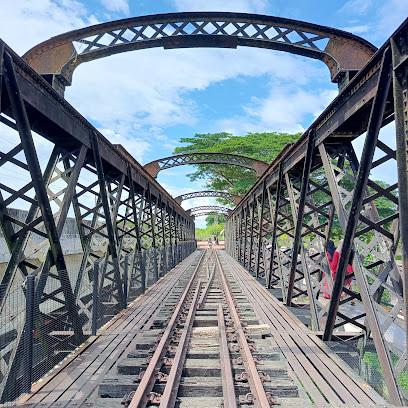
Qing Xin Ling Leisure & Cultural Village
Experience the serene beauty and rich cultural heritage of Qing Xin Ling Leisure & Cultural Village in Ipoh, a must-visit for all tourists.

Mossy Forest
Explore the enchanting Mossy Forest at Gunung Brinchang, a mystical nature preserve offering stunning views and unique biodiversity in the heart of Pahang.
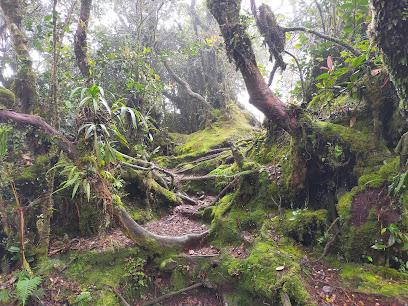
D R Seenivasagam Recreational Park
Discover the natural beauty and tranquility of D R Seenivasagam Recreational Park, a perfect retreat for families and nature lovers in Ipoh, Perak.

Ubudiah Royal Mosque of Kuala Kangsar
Discover the architectural splendor of Ubudiah Royal Mosque in Kuala Kangsar, a must-visit for its stunning design and serene atmosphere.

Cameron Highland Butterfly Farm
Experience the beauty of nature at Cameron Highland Butterfly Farm, a vibrant garden filled with butterflies, exotic plants, and educational exhibits in Pahang.

Essential places to dine
Plan B Restaurant | Ipoh
Discover the best of Asian fusion cuisine at Plan B Restaurant in Ipoh – where taste meets style in every dish.

Ming Court Hong Kong Dim Sum Sdn Bhd
Discover the essence of authentic dim sum at Ming Court Hong Kong Dim Sum Sdn Bhd in Ipoh – a culinary delight awaits you!
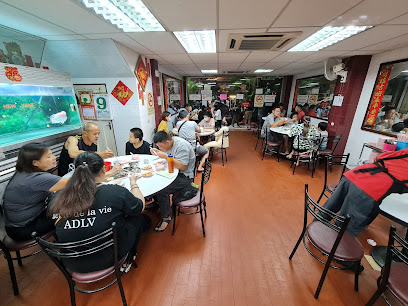
Ipoh Tuck Kee Restaurant
Discover the authentic flavors of Chinese cuisine at Ipoh Tuck Kee Restaurant, where every dish is crafted with passion and tradition.
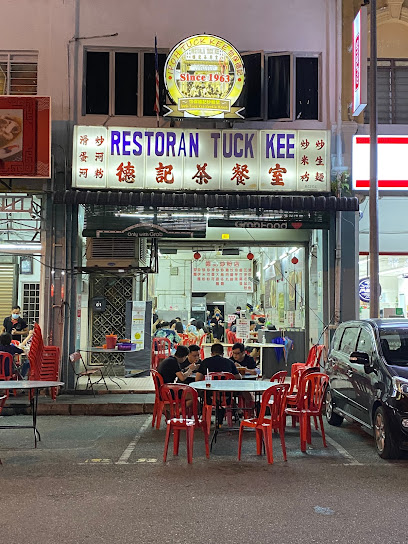
Pusing Public Restaurant
Discover authentic Chinese and seafood cuisine at Pusing Public Restaurant in Ipoh – where flavors come alive!

Jeff's Cellar
Experience culinary artistry at Jeff's Cellar - where exquisite flavors meet enchanting ambiance in Sunway City Ipoh.

Tandoor Grill Ipoh
Experience the vibrant flavors of India at Tandoor Grill Ipoh, where every dish tells a story.

Sin Hup Kee
Experience authentic Malaysian Chinese cuisine at Sin Hup Kee in Ipoh – where every dish tells a story!

Sun Marpoh Restaurant
Experience authentic Chinese cuisine at Sun Marpoh Restaurant in Ipoh Garden – where tradition meets flavor in every dish.

Ayam Garam Aun Kheng Lim (Main Branch)
Discover the savory delights of Ayam Garam Aun Kheng Lim in Ipoh—home of the famous salted chicken and delightful Chinese takeaway dishes.

Restoran Moon De Moon
Savor authentic Malaysian flavors at Restoran Moon De Moon in Ipoh—home of unique curry noodles and delightful local dishes.

Hadramout Paradise Restaurant
Experience authentic Arabian flavors at Hadramout Paradise Restaurant in Ipoh – where every dish tells a story.
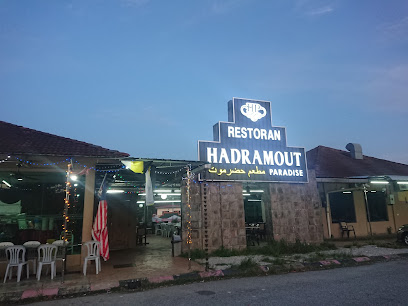
STG Tea House Cafe
Discover tranquility at STG Tea House Cafe in Ipoh – where delightful flavors meet serene ambiance.

Restaurant Sri Aryaa Bhavan Ipoh
Discover authentic South Indian breakfast delights at Sri Aryaa Bhavan in Ipoh Old Town – where tradition meets flavor!

Durbar at FMS
Discover the vibrant fusion of Western and Asian cuisines at Durbar at FMS in Ipoh - a must-visit destination for food enthusiasts.
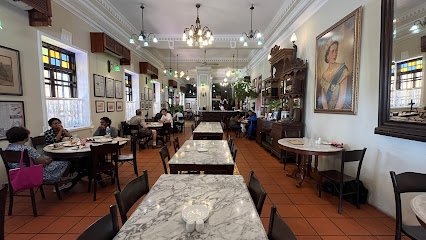
Restoran Cowan Street Ayam Tauge & Koitiau
Discover mouthwatering chicken dishes at Restoran Cowan Street Ayam Tauge & Koitiau - a culinary gem in Ipoh's vibrant food scene.
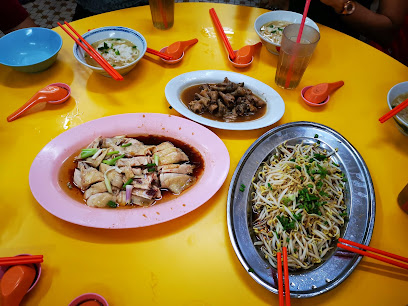
Markets, malls and hidden boutiques
AEON Kinta City
Explore AEON Kinta City, a vibrant shopping paradise in Ipoh, Malaysia, offering diverse retail, dining, and entertainment experiences.
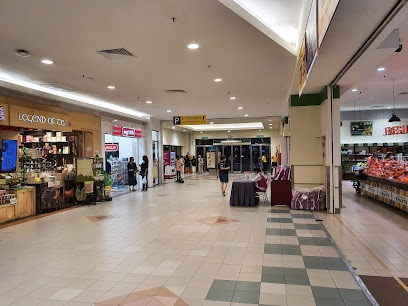
Ipoh Parade
Explore Ipoh Parade, a dynamic shopping mall in Ipoh offering a variety of retail, dining, and entertainment experiences for every traveler.

Angsana Ipoh Mall
Explore Angsana Ipoh Mall: A vibrant shopping and dining hub in the heart of Ipoh, Malaysia, offering a unique blend of local and international experiences.

CECIBO
Experience the vibrant shopping scene at CECIBO in Ipoh, where fashion and culture converge for an unforgettable retail adventure.

ED Shop Ipoh
Discover ED Shop Ipoh, your one-stop destination for exquisite homewares including bedding, curtains, furniture, and more, in a vibrant shopping atmosphere.
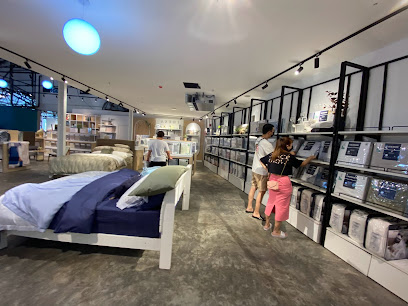
The Store
Discover local treasures and culinary delights at The Store, the premier supermarket in Ipoh, Perak, for an unforgettable shopping experience.

The Store @ Jalan Dato Onn Jaafar
Explore a vibrant shopping experience at The Store @ Jalan Dato Onn Jaafar in Ipoh, where local flavors and daily essentials meet.

BookXcess Kong Heng Ipoh
Discover the enchanting world of literature at BookXcess Kong Heng in Ipoh, where rare books and a cozy atmosphere await every reader.

UNIQLO Ipoh Parade
Explore trendy fashion and timeless styles at UNIQLO Ipoh Parade, the ultimate shopping destination in Ipoh, Malaysia.

Fujiyama Ipoh
Explore Fujiyama Ipoh: Your destination for unique vintage clothing, rare music records, and a delightful thrift shopping experience in Perak.

Vintage Ipoh Gallery
Explore the fascinating world of antiques at Vintage Ipoh Gallery, where every piece has a story and history awaits discovery.

Fancy Gift Shop
Explore the Fancy Gift Shop in Ipoh for unique artisanal gifts and souvenirs that capture the essence of Malaysia's rich culture.

House of Hearts | Play N Gift Enterprise | IP0497923-T
Explore the charming House of Hearts, a gift shop in Ipoh offering unique toys and souvenirs that embody the spirit of Malaysian culture.

empatkakak (ladies thrift shop ipoh)
Explore the unique world of vintage fashion at Empatkakak, Ipoh's charming thrift shop offering sustainable style and eclectic finds.

LIFESHOP ATELIER IPOH
Explore Lifeshop Atelier Ipoh for unique clothing and furniture that reflects the rich culture of Malaysia.

Essential bars & hidden hideouts
Euro House
Discover the lively Euro House in Ipoh, where great food, drinks, and ambiance come together for an unforgettable dining experience.

Bricks & Barrels Ipoh
Experience the vibrant nightlife at Bricks & Barrels in Ipoh, where Irish pub charm meets an energetic dance club atmosphere.

Healy Mac's Irish Bar
Discover the heart of Irish culture at Healy Mac's Irish Bar in Ipoh, where hearty meals and vibrant drinks create unforgettable moments.

Rooftop Restaurant and Bar
Discover the perfect blend of exquisite cuisine and breathtaking views at Rooftop Restaurant and Bar in Ipoh, Malaysia.

Tiga
Discover Tiga, a cocktail bar in Ipoh known for its unique drinks, vibrant atmosphere, and unforgettable nightlife experience.

History Bistro Z Ipoh
Discover the flavors of Ipoh at History Bistro Z, a cozy pub offering a delightful mix of local dishes in a vibrant setting.

Viking Village Bar of Music | Pub | Bar | Bistro | Ipoh
Experience the vibrant blend of grilled delicacies and live music at Viking Village Bar of Music in Ipoh, a perfect spot for an unforgettable night out.

Atas Speakeasy
Discover the captivating charm of Atas Speakeasy, a premier cocktail bar in Ipoh, offering innovative drinks and a cozy atmosphere for a perfect night out.

Speakeasy
Experience the lively pulse of Ipoh at Speakeasy, where gourmet dining meets vibrant nightlife in a stylish gastropub setting.

St. Patrick Irish Bar | Ipoh
Discover the charm of Ireland at St. Patrick Irish Bar in Ipoh, where vibrant nightlife meets authentic Irish cuisine.

Ohana Bar
Discover the lively ambiance and diverse drink offerings at Ohana Bar, a top nightlife spot in Ipoh, Malaysia, perfect for socializing and relaxation.

Sinhalese Bar
Discover the vibrant atmosphere and unique local flavors at Sinhalese Bar, a must-visit gem in the heart of Ipoh's nightlife.

MINERS ARMS Ipoh Oldtown
Discover the eclectic charm of Miners Arms in Ipoh Oldtown, where vibrant cocktails and a lively atmosphere await.

The Vintage Garden
Discover the enchanting atmosphere of The Vintage Garden in Ipoh, a perfect blend of vintage charm and modern mixology.

St James Barrels And Cork
Discover exquisite wines and innovative fusion cuisine at St James Barrels And Cork in Ipoh, where every sip and bite tells a story.

Local Phrases
-
- HelloHello
[Halo] - GoodbyeGoodbye
[Gudbai] - YesYa
[Ya] - NoTidak
[Tidak] - Please/You're welcomeSila
[Sila] - Thank youTerima kasih
[Terima kasih] - Excuse me/SorryMaaf
[Maaf] - How are you?Apa khabar?
[Apa khabar] - Fine. And you?Baik. Dan awak?
[Baik. Dan awak?] - Do you speak English?Boleh cakap Bahasa Inggeris?
[Boleh chakap Bahasa Inggeris?] - I don't understandSaya tak faham
[Saya tak faham]
- HelloHello
-
- I'd like to see the menu, pleaseBoleh tunjukkan menu?
[Boleh tunjukkan menu?] - I don't eat meatSaya tidak makan daging
[Saya tidak makan daging] - Cheers!Yam seng!
[Yam seng!] - I would like to pay, pleaseSaya nak bayar, boleh?
[Saya nak bayar, boleh?]
- I'd like to see the menu, pleaseBoleh tunjukkan menu?
-
- Help!Tolong!
[Tolong!] - Go away!Pergi jauh-jauh!
[Pergi jauh-jauh!] - Call the Police!Panggil polis!
[Panggil polis!] - Call a doctor!Panggil doktor!
[Panggil doktor!] - I'm lostSaya sesat
[Saya sesat] - I'm illSaya sakit
[Saya sakit]
- Help!Tolong!
-
- I'd like to buy...Saya nak beli...
[Saya nak beli...] - I'm just lookingSaya cuma tengok-tengok
[Saya cuma tengok-tengok] - How much is it?Berapa harganya?
[Berapa harganya?] - That's too expensiveItu terlalu mahal
[Itu terlalu mahal] - Can you lower the price?Boleh kurangkan harga?
[Boleh kurangkan harga?]
- I'd like to buy...Saya nak beli...
-
- What time is it?Pukul berapa sekarang?
[Pukul berapa sekarang?] - It's one o'clockPukul satu
[Pukul satu] - Half past (10)Pukul setengah sebelas
[Pukul setengah sebelas] - MorningPagi
[Pagi] - AfternoonPetang
[Petang] - EveningMalam
[Malam] - YesterdaySemalam
[Semalam] - TodayHari ini
[Hari ini] - TomorrowEsok
[Esok] - 1Satu
[Satu] - 2Dua
[Dua] - 3Tiga
[Tiga] - 4Empat
[Empat] - 5Lima
[Lima] - 6Enam
[Enam] - 7Tujuh
[Tujuh] - 8Lapan
[Lapan] - 9Sembilan
[Sembilan] - 10Sepuluh
[Sepuluh]
- What time is it?Pukul berapa sekarang?
-
- Where's a/the...?Di mana?
[Di mana?] - What's the address?Apa alamatnya?
[Apa alamatnya?] - Can you show me (on the map)?Boleh tunjukkan saya (di peta)?
[Boleh tunjukkan saya (di peta)?] - When's the next (bus)?Bila bas seterusnya?
[Bila bas seterusnya?] - A ticket (to ....)Satu tiket (ke ....)
[Satu tiket (ke ....)]
- Where's a/the...?Di mana?
History of Ipoh
-
Ipoh, the capital city of Perak state in Malaysia, traces its origins back to the early 19th century. Initially, it was a small village inhabited by local Malay communities who engaged in agriculture and fishing along the Kinta River. The fertile land and abundant natural resources made it a prime location for settlements.
-
The discovery of tin in the Kinta Valley in the 1880s marked a pivotal moment in Ipoh’s history. This period, known as the Tin Rush, attracted a large influx of Chinese immigrants who came to work in the tin mines. The mining industry rapidly transformed Ipoh from a sleepy village into a bustling town. Prominent Chinese clans, such as the Hakka and Cantonese, played significant roles in the development of the tin mining industry.
-
Under British colonial rule, which began in the late 19th century, Ipoh saw significant infrastructure development. The British introduced railway lines, roads, and administrative buildings, which facilitated the export of tin and other resources. The town's layout was modernized, and iconic structures like the Ipoh Railway Station and the Town Hall were constructed, reflecting British architectural influence.
-
During World War II, Ipoh fell under Japanese occupation from 1941 to 1945. This period was marked by hardship and turmoil, as the local population faced strict Japanese control and economic challenges. Despite the adversities, the resilience of Ipoh’s residents helped the city to recover and rebuild in the post-war years.
-
After Malaysia gained independence in 1957, Ipoh continued to thrive as a commercial hub. However, the decline of the tin mining industry in the 1980s prompted an economic shift. Diversification into other sectors such as agriculture, manufacturing, and tourism became crucial. The city also witnessed rapid urbanization, with new residential areas, shopping complexes, and educational institutions emerging.
-
Ipoh is renowned for its rich cultural tapestry, shaped by its diverse population comprising Malays, Chinese, Indians, and other ethnic groups. This diversity is reflected in the city's festivals, cuisine, and religious practices. The Old Town area of Ipoh, with its colonial-era buildings and traditional shophouses, stands as a testament to the city’s multicultural heritage and vibrant history.
-
Today, Ipoh is a city that beautifully blends tradition with modernity. It has become a popular destination for tourists seeking to explore its historical sites, natural attractions, and culinary delights. Landmarks such as the Kek Lok Tong Cave Temple, the Ipoh Heritage Trail, and the bustling local markets continue to draw visitors. Additionally, initiatives to preserve the city's heritage buildings and promote sustainable tourism are ensuring that Ipoh’s rich history and culture remain vibrant for future generations.
Ipoh Essentials
-
Ipoh is accessible via several modes of transportation. The nearest airport is Sultan Azlan Shah Airport, which has domestic flights and a few international connections. Alternatively, Kuala Lumpur International Airport (KLIA) is about 200 kilometers away, and you can take a bus, train, or car from there to Ipoh. Train services operated by KTM (Keretapi Tanah Melayu) offer a comfortable and scenic route from Kuala Lumpur to Ipoh, typically taking about 2.5 hours. Long-distance buses are also available, with several operators providing frequent services from major cities like Kuala Lumpur, Penang, and Singapore.
-
Ipoh has a variety of transportation options. For local travel, you can use ride-hailing services like Grab, which are widely available and convenient. Taxis are also an option, but make sure they use the meter. Public buses operated by Perak Transit connect various parts of the city, but they may not be as frequent or reliable as other forms of transport. Renting a car is another option for those who prefer flexibility. Ipoh is also a walkable city, especially in the Old Town area where many attractions are located close to each other.
-
The official currency in Malaysia is the Malaysian Ringgit (MYR). Credit and debit cards are widely accepted in most hotels, restaurants, and larger shops. However, it is advisable to carry some cash for smaller establishments, street vendors, and local markets. ATMs are plentiful throughout the city, and many accept international cards. Currency exchange services are available in shopping malls and at the airport. Always check the exchange rates to ensure you are getting a fair deal.
-
Ipoh is generally considered a safe city for tourists. However, it is always wise to take standard precautions. Avoid walking alone at night in unfamiliar or poorly lit areas. Keep your belongings secure, especially in crowded places like markets and public transport. Areas such as Buntong and Manjoi have higher crime rates, so exercise caution if you visit these neighborhoods. It is also advisable to use ride-hailing services instead of flagging down taxis on the street to ensure safety.
-
In case of an emergency, dial 999 for immediate assistance, which connects you to police, ambulance, and fire services. There are several hospitals and clinics in Ipoh, including the well-equipped Hospital Raja Permaisuri Bainun. Pharmacies are widely available for minor health issues and over-the-counter medications. It is highly recommended to have travel insurance that covers medical emergencies. For consular assistance, contact your country's embassy or consulate in Malaysia.
-
Fashion: Do dress modestly, especially when visiting religious sites. Avoid wearing overly revealing clothing. Religion: Do respect local customs and traditions. Remove your shoes before entering a mosque or temple. Public Transport: Do be respectful and give up your seat to elderly passengers. Don't eat or drink on public transport. Greetings: Do greet people with a smile and a slight bow or a handshake. Using the traditional Malay greeting 'Salam' is also appreciated. Eating & Drinking: Do try local delicacies and accept food offerings graciously. Don't refuse hospitality, as it is considered impolite.
-
To experience Ipoh like a local, visit the bustling local markets such as the Ipoh Central Market and Memory Lane Flea Market. Engage with the locals, who are often friendly and willing to share stories about the city's history and culture. Don't miss the opportunity to try Ipoh's famous white coffee at a local kopitiam (coffee shop). For a unique experience, take a walk along Concubine Lane in Old Town, known for its historical charm and vibrant street art. Additionally, explore the limestone caves and temples, such as Kek Lok Tong and Sam Poh Tong, which offer a serene escape from the city bustle.
Trending Landmark in Ipoh
-
Gunung Lang Recreational Park
-
Lost World of Tambun Theme Park
-
Kek Look Tong
-
Qing Xin Ling Leisure & Cultural Village
-
Dataran Ipoh
-
Mirror Lake
-
Perak Cave Temple
-
Dataran KTM Ipoh
-
Sam Poh Tong Temple
-
Padang Ipoh
-
Gerbang Malam Ipoh
-
TASIK CERMIN IPOH
-
Mural Art's Lane
-
Kledang Hill M.E.T
-
Ipoh Kallumalai Arulmigu Subramaniyar Temple
Nearby Cities to Ipoh
-
Things To Do in Cameron Highlands
-
Things To Do in Penang
-
Things To Do in George Town
-
Things To Do in Kuala Lumpur
-
Things To Do in Kota Bharu
-
Things To Do in Langkawi
-
Things To Do in Kuala Terengganu
-
Things To Do in Satun
-
Things To Do in Kuantan
-
Things To Do in Medan
-
Things To Do in Malacca
-
Things To Do in Trang
-
Things To Do in Nakhon Si Thammarat
-
Things To Do in Krabi
-
Things To Do in Johor Bahru
















